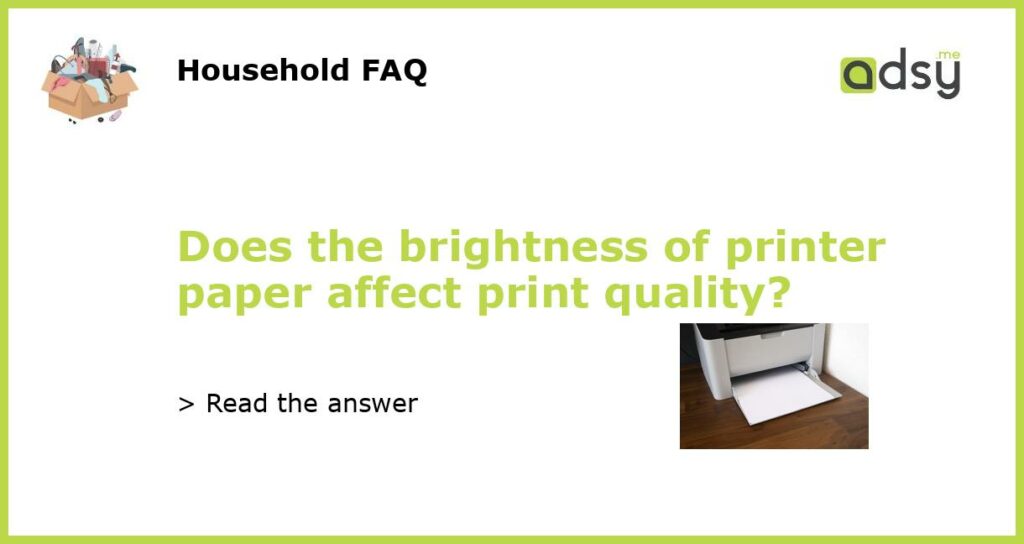Does the brightness of printer paper affect print quality?
When it comes to printing, many factors can affect the overall quality of the output. One aspect that often gets overlooked is the brightness of the printer paper. The brightness of the paper refers to the amount of light it reflects, and it can have a significant impact on how well the printed text and images appear.
Understanding paper brightness
Paper brightness is measured on a scale of 1 to 100, with higher numbers indicating a brighter paper. Brightness is determined by the chemical composition of the paper and how effectively it reflects light. The brighter the paper, the more vibrant and crisp the printed text and images will appear.
The impact on print quality
Choosing a bright paper can have several benefits for print quality. Firstly, a brighter paper enhances the contrast between the ink and the paper, making text and images appear sharper. This is especially important for documents that require fine details or high-resolution graphics.
In addition to improved contrast, a bright paper also allows for better color reproduction. Colors printed on brighter paper tend to be more vibrant and true to the original image. If you’re printing photographs or documents with color illustrations, using a bright paper can help ensure that the colors come out as intended.
Considerations for different types of prints
While brighter paper generally leads to better print quality, there are a few exceptions. For example, when printing black and white text documents, a less bright paper might be preferable. This is because the stark contrast between a bright white paper and black ink can sometimes cause eye strain, especially when reading large amounts of text.
On the other hand, when printing black and white images or documents with a lot of grayscale content, a bright paper can help bring out the details and subtleties in the image. It’s all about finding the right balance for the specific type of print you’re creating.
Other factors to consider
While paper brightness is important, it’s not the only factor that influences print quality. Paper weight, texture, and opacity also play a role. Heavier papers are less likely to show ink bleed-through, while textured papers can add a unique aesthetic to your prints. Opacity is particularly important when printing double-sided documents, as you want to avoid any show-through from the other side.
It’s also worth noting that the print quality will also depend on the printer and ink used. A high-quality printer paired with compatible ink can produce excellent results regardless of the paper’s brightness. However, if you’re investing in a premium printer and ink, it’s best to pair them with a high-quality, bright paper to ensure the best outcome.
In summary
In conclusion, the brightness of printer paper does indeed affect print quality. Brighter paper reflects more light, resulting in sharper text and more vibrant colors. However, the optimal level of brightness can vary depending on the type of print you’re creating. It’s important to consider other factors such as paper weight, texture, and opacity when selecting the right paper. Ultimately, finding the right balance between all these factors will help you achieve the best possible print quality for your specific needs.






